As you prepare to hunker down for Winter Break, make sure you're well stocked with books for the whole family. Below is Lauren Knight's lovely post from last winter on children's books for this time of year. Take a peek, run to the library and don't forget to pick a few up for yourself! With the weather patterns jumping between arctic air and icy sidewalks, we are all spending more time indoors this winter. And while we still encourage you to bundle up and experience this quiet season outdoors with your children (even for a few minutes every day), there's nothing wrong with cuddling up under a blanket on the couch or next to the fireplace with a good book (or fourteen!). Here are some of our favorite winter reads for children of all ages.
With the weather patterns jumping between arctic air and icy sidewalks, we are all spending more time indoors this winter. And while we still encourage you to bundle up and experience this quiet season outdoors with your children (even for a few minutes every day), there's nothing wrong with cuddling up under a blanket on the couch or next to the fireplace with a good book (or fourteen!). Here are some of our favorite winter reads for children of all ages. Over and Under the Snow, by Kate MessnerWith beautiful, serene illustrations by Christopher Silas Neal, Over and Under the Snow follows a father and son as they traverse the snowy landscape and the "secret kingdom under the snow," the subnivean zone: a network of "small open spaces between the snowpack and the ground... created when heat from the ground melts some of the snow next to it and leaves a layer of air just above the dirt and fallen leaves." Neal writes about all of the woodland creatures - from foxes, chipmunks, beavers, and red squirrels, to bullfrogs, voles, shrews, and snowshoe hares, among many more - that live and adapt to the winter weather outdoors.
Over and Under the Snow, by Kate MessnerWith beautiful, serene illustrations by Christopher Silas Neal, Over and Under the Snow follows a father and son as they traverse the snowy landscape and the "secret kingdom under the snow," the subnivean zone: a network of "small open spaces between the snowpack and the ground... created when heat from the ground melts some of the snow next to it and leaves a layer of air just above the dirt and fallen leaves." Neal writes about all of the woodland creatures - from foxes, chipmunks, beavers, and red squirrels, to bullfrogs, voles, shrews, and snowshoe hares, among many more - that live and adapt to the winter weather outdoors. The Story of Snow: The Science of Winter's Wonder, by Mark CassinoHow do snow crystals form? What shapes can they take? Are no two snow crystals alike? These questions and more are answered in this visually stunning exploration of the science of snow. Perfect for reading on winter days, the book features photos of real snow crystals in their beautiful diversity. Snowflake-catching instructions are also included!
The Story of Snow: The Science of Winter's Wonder, by Mark CassinoHow do snow crystals form? What shapes can they take? Are no two snow crystals alike? These questions and more are answered in this visually stunning exploration of the science of snow. Perfect for reading on winter days, the book features photos of real snow crystals in their beautiful diversity. Snowflake-catching instructions are also included! The Shortest Day: Celebrating the Winter Solstice, by Wendy PfefferThe beginning of winter is marked by the solstice, the shortest day of the year. Long ago, people grew afraid when each day had fewer hours of sunshine than the day before. Over time, they realized that one day each year the sun started moving toward them again. In lyrical prose and cozy illustrations, this book explains what the winter solstice is and how it has been observed by various cultures throughout history. Many contemporary holiday traditions were borrowed from ancient solstice celebrations. (Amazon)
The Shortest Day: Celebrating the Winter Solstice, by Wendy PfefferThe beginning of winter is marked by the solstice, the shortest day of the year. Long ago, people grew afraid when each day had fewer hours of sunshine than the day before. Over time, they realized that one day each year the sun started moving toward them again. In lyrical prose and cozy illustrations, this book explains what the winter solstice is and how it has been observed by various cultures throughout history. Many contemporary holiday traditions were borrowed from ancient solstice celebrations. (Amazon) The Snowy Day, by Ezra Jack KeatsWinner of the 1963 Caldecott Medal, this classic never gets old! Its simplicity and beautiful artwork inspires the imagination and points us to the simple joy of winter's first snowfall.
The Snowy Day, by Ezra Jack KeatsWinner of the 1963 Caldecott Medal, this classic never gets old! Its simplicity and beautiful artwork inspires the imagination and points us to the simple joy of winter's first snowfall.
 Brave Irene, by William SteigA 1986 New York Times Book Review Best Illustrated Book of the Year, this timeless (and a little bit wacky) story follows young Irene, who is determined to deliver a dress that her mother has made for the duchess to wear that very evening. The story, much in the style of Steig, is slow and detailed, and so accurately conveys the difficulties of being small in a big, big world, but also being determined and brave.SkySisters, by Jan Bourdeau WabooseWith stunning illustrations by Brian Deines, this book tells the story of the Northern Lights as two Ojibway sisters set off across the frozen north country to see the SkySpirits' midnight dance. It isn't easy for the younger sister to be silent, but gradually she begins to treasure the stillness and the wonderful experiences it brings. After an exhilarating walk and patient waiting, the girls are rewarded by the arrival of the SkySpirits - the northern lights - dancing and shimmering in the night sky. (Goodreads)Stopping by the Woods on a Snowy Evening, by Robert FrostEver since it was published in 1978, the picture-book presentation of Robert Frost's poem "Stopping by Woods on a Snowy Evening" has been an enduring favorite. For this special edition with a new design, trim size, and three new spreads, Susan Jeffers has added more detail and subtle color to her sweeping backgrounds of frosty New England scenes. There are more animals to find among the trees, and the kindly figure with his "promises to keep" exudes warmth as he stops to appreciate the quiet delights of winter. (Goodreads)
Brave Irene, by William SteigA 1986 New York Times Book Review Best Illustrated Book of the Year, this timeless (and a little bit wacky) story follows young Irene, who is determined to deliver a dress that her mother has made for the duchess to wear that very evening. The story, much in the style of Steig, is slow and detailed, and so accurately conveys the difficulties of being small in a big, big world, but also being determined and brave.SkySisters, by Jan Bourdeau WabooseWith stunning illustrations by Brian Deines, this book tells the story of the Northern Lights as two Ojibway sisters set off across the frozen north country to see the SkySpirits' midnight dance. It isn't easy for the younger sister to be silent, but gradually she begins to treasure the stillness and the wonderful experiences it brings. After an exhilarating walk and patient waiting, the girls are rewarded by the arrival of the SkySpirits - the northern lights - dancing and shimmering in the night sky. (Goodreads)Stopping by the Woods on a Snowy Evening, by Robert FrostEver since it was published in 1978, the picture-book presentation of Robert Frost's poem "Stopping by Woods on a Snowy Evening" has been an enduring favorite. For this special edition with a new design, trim size, and three new spreads, Susan Jeffers has added more detail and subtle color to her sweeping backgrounds of frosty New England scenes. There are more animals to find among the trees, and the kindly figure with his "promises to keep" exudes warmth as he stops to appreciate the quiet delights of winter. (Goodreads) Snow Day! by Lester LaminackWith beautiful illustrations by Adam Gustavson, this imaginative book follows the narrator imagining a snow day after the weatherman predicts a big snowfall for the following school day. The end is sweet, as we find out just who the narrator is!
Snow Day! by Lester LaminackWith beautiful illustrations by Adam Gustavson, this imaginative book follows the narrator imagining a snow day after the weatherman predicts a big snowfall for the following school day. The end is sweet, as we find out just who the narrator is! Snow, by Uri ShulevitzUri Shulevitz' playful depiction of a snowy day and the transformation of a city is perfectly captured in simple, poetic text and lively watercolor and pen-and-ink illustrations. Snow is a 1998 New York Times Outstanding Book of the Year and a 1999 Caldecott Honor Book. Note: this one is hard to find, but you can listen to it read out loud on YouTube!
Snow, by Uri ShulevitzUri Shulevitz' playful depiction of a snowy day and the transformation of a city is perfectly captured in simple, poetic text and lively watercolor and pen-and-ink illustrations. Snow is a 1998 New York Times Outstanding Book of the Year and a 1999 Caldecott Honor Book. Note: this one is hard to find, but you can listen to it read out loud on YouTube! Snowflake Bentley, by Jacqueline Briggs Martin"Of all the forms of water the tiny six-pointed crystals of ice called snow are incomparably the most beautiful and varied." - Wilson Bentley (1865-1931) From the time he was a small boy in Vermont, Wilson Bentley saw snowflakes as small miracles. And he determined that one day his camera would capture for others the wonder of the tiny crystal. Bentley's enthusiasm for photographing snowflakes was often misunderstood in his time, but his patience and determination revealed two important truths: no two snowflakes are alike; and each one is startlingly beautiful. His story is gracefully told and brought to life in lovely woodcuts, giving children insight into a soul who had not only a scientist's vision and perseverance but a clear passion for the wonders of nature. Snowflake Bentley won the 1999 Caldecott Medal. (Amazon)
Snowflake Bentley, by Jacqueline Briggs Martin"Of all the forms of water the tiny six-pointed crystals of ice called snow are incomparably the most beautiful and varied." - Wilson Bentley (1865-1931) From the time he was a small boy in Vermont, Wilson Bentley saw snowflakes as small miracles. And he determined that one day his camera would capture for others the wonder of the tiny crystal. Bentley's enthusiasm for photographing snowflakes was often misunderstood in his time, but his patience and determination revealed two important truths: no two snowflakes are alike; and each one is startlingly beautiful. His story is gracefully told and brought to life in lovely woodcuts, giving children insight into a soul who had not only a scientist's vision and perseverance but a clear passion for the wonders of nature. Snowflake Bentley won the 1999 Caldecott Medal. (Amazon) Snowflakes in Photographs, by W. A. BentleyFor any age child (or adult!) who is fascinated with geometry and the natural world, Bentley's photographs are breathtaking and intriguing. In 1931, the American Meteorological Society gathered the best of Bentley's photos and had them published; that work has long been available in a Dover reprint edition. The present volume includes a selection of 72 of the best plates (containing over 850 royalty-free, black-and-white photographs), carefully selected from that larger collection. (Amazon)
Snowflakes in Photographs, by W. A. BentleyFor any age child (or adult!) who is fascinated with geometry and the natural world, Bentley's photographs are breathtaking and intriguing. In 1931, the American Meteorological Society gathered the best of Bentley's photos and had them published; that work has long been available in a Dover reprint edition. The present volume includes a selection of 72 of the best plates (containing over 850 royalty-free, black-and-white photographs), carefully selected from that larger collection. (Amazon) Brian's Winter, by Gary PaulsenIf your child has read and enjoyed Hatchet, be sure to pick Brian's Winter up at the library! This book explores what would have happened to the character Brian if he had not been rescued at the end of Hatchet, and instead had to hunker down for a harsh winter. The story deals with Brian, still stranded at the L-shaped lake during the fall and winter, constructing a winter shelter, building snow shoes, being confronted by a bear, befriending and naming a skunk and learning how to make a bow more powerful. Eventually, Brian meets a family of Cree trappers, the Smallhorns, who help him return home.
Brian's Winter, by Gary PaulsenIf your child has read and enjoyed Hatchet, be sure to pick Brian's Winter up at the library! This book explores what would have happened to the character Brian if he had not been rescued at the end of Hatchet, and instead had to hunker down for a harsh winter. The story deals with Brian, still stranded at the L-shaped lake during the fall and winter, constructing a winter shelter, building snow shoes, being confronted by a bear, befriending and naming a skunk and learning how to make a bow more powerful. Eventually, Brian meets a family of Cree trappers, the Smallhorns, who help him return home. The Long Winter, by Laura Ingalls WilderAn autobiographical children's novel and part of the Little House series, it is set in southeastern Dakota Territory during the severe winter of 1880 - 1881, when Ingalls turned 14 years old and blizzards continued for seven months!
The Long Winter, by Laura Ingalls WilderAn autobiographical children's novel and part of the Little House series, it is set in southeastern Dakota Territory during the severe winter of 1880 - 1881, when Ingalls turned 14 years old and blizzards continued for seven months! Cabin Fever (Diary of a Wimpy Kid #6), by Jeff KinneyGreg Heffley is in big trouble. School property has been damaged, and Greg is the prime suspect. But the crazy thing is, he’s innocent. Or at least sort of. The authorities are closing in, but when a surprise blizzard hits, the Heffley family is trapped indoors. Greg knows that when the snow melts he’s going to have to face the music, but could any punishment be worse than being stuck inside with your family for the holidays? (Goodreads)Now all we need is a good snow! Happy reading!
Cabin Fever (Diary of a Wimpy Kid #6), by Jeff KinneyGreg Heffley is in big trouble. School property has been damaged, and Greg is the prime suspect. But the crazy thing is, he’s innocent. Or at least sort of. The authorities are closing in, but when a surprise blizzard hits, the Heffley family is trapped indoors. Greg knows that when the snow melts he’s going to have to face the music, but could any punishment be worse than being stuck inside with your family for the holidays? (Goodreads)Now all we need is a good snow! Happy reading!


 We are so lucky that our campus allows for sledding! Elementary children bring their sleds and take off with their friends on our (moderate!) hill.
We are so lucky that our campus allows for sledding! Elementary children bring their sleds and take off with their friends on our (moderate!) hill.
 A first year child's first experience of this Elementary privilege.
A first year child's first experience of this Elementary privilege. There are outdoor attire rules... I'm guessing the child's hood just flew off mid-sledding...
There are outdoor attire rules... I'm guessing the child's hood just flew off mid-sledding...



 Teamwork makes the dream work!
Teamwork makes the dream work! Recess is, of course, fun and provides lots of time for the gross motor movement and is so great for children. But, this movement is not limited to recess, and the snow and cold doesn't stop the children from getting their work done.
Recess is, of course, fun and provides lots of time for the gross motor movement and is so great for children. But, this movement is not limited to recess, and the snow and cold doesn't stop the children from getting their work done. "The child’s instinct confirms the fact that work is an inherent tendency in human nature; it is the characteristic instinct of the human race.” -Dr. MontessoriLet me once again proclaim the photographic brilliance of Melinda Smith! Thank you, Melinda!
"The child’s instinct confirms the fact that work is an inherent tendency in human nature; it is the characteristic instinct of the human race.” -Dr. MontessoriLet me once again proclaim the photographic brilliance of Melinda Smith! Thank you, Melinda!





 And here is another take on toddler lemon squeezing... and subsequent "sense exploration" (aka sneaking a taste).
And here is another take on toddler lemon squeezing... and subsequent "sense exploration" (aka sneaking a taste).
 Special shout out (as always!) to Melinda Smith for sharing your photography skills with us. It was such a pleasure to have you join our class!
Special shout out (as always!) to Melinda Smith for sharing your photography skills with us. It was such a pleasure to have you join our class!
 Jazz Age JosephineWritten by Jonah WinterIllustrated by Marjorie PricemanThe story of St. Louis native Josephine Baker is beautifully portrayed in Jazz Age Josephine. Here we follow Josephine on her journey from poverty to stardom in Paris and all of that lay in between.
Jazz Age JosephineWritten by Jonah WinterIllustrated by Marjorie PricemanThe story of St. Louis native Josephine Baker is beautifully portrayed in Jazz Age Josephine. Here we follow Josephine on her journey from poverty to stardom in Paris and all of that lay in between. We MarchWritten and Illustrated by Shane W. EvansA beautiful book portraying one family’s participation in the March on Washington for Jobs and Freedom, this book is written for the youngest audiences. Children and adults alike will appreciate the artwork that graces the pages. The author writes, “It takes people of all ages and cultural backgrounds to move a nation into a new era of freedom. In a sense, these marches pushed old ideas out of the way and moved new ideas forward.”
We MarchWritten and Illustrated by Shane W. EvansA beautiful book portraying one family’s participation in the March on Washington for Jobs and Freedom, this book is written for the youngest audiences. Children and adults alike will appreciate the artwork that graces the pages. The author writes, “It takes people of all ages and cultural backgrounds to move a nation into a new era of freedom. In a sense, these marches pushed old ideas out of the way and moved new ideas forward.” Brick by BrickWritten by Charles R. Smith Jr.Illustrated by Floyd CooperThis tells the story of the roles slaves had in building the original White House. Through telling this story, Brick by Brick offers truth and a holistic approach to history that is so often missing. This is well worth reading and discussing with our children.
Brick by BrickWritten by Charles R. Smith Jr.Illustrated by Floyd CooperThis tells the story of the roles slaves had in building the original White House. Through telling this story, Brick by Brick offers truth and a holistic approach to history that is so often missing. This is well worth reading and discussing with our children.  Follow the Drinking GourdStories and Pictures by Jeanette WinterThis book tells the story of Underground Railroad conductor Peg Leg Joe who hired himself out to plantation owners. He taught the slaves he worked alongside the folk song “Follow the Drinking Gourd,” the lyrics of which were laced with information for escaping to Canada. This is a book my children pick up over and over at the library.
Follow the Drinking GourdStories and Pictures by Jeanette WinterThis book tells the story of Underground Railroad conductor Peg Leg Joe who hired himself out to plantation owners. He taught the slaves he worked alongside the folk song “Follow the Drinking Gourd,” the lyrics of which were laced with information for escaping to Canada. This is a book my children pick up over and over at the library. Juneteenth for MazieWritten and Illustrated by Floyd CooperMore than two years after the Emancipation Proclamation, news of the end of the Civil War and slavery was announced in Galveston, Texas. Juneteenth celebrates this announcement, and this book beautifully tells the story of its celebration and importance generations later.
Juneteenth for MazieWritten and Illustrated by Floyd CooperMore than two years after the Emancipation Proclamation, news of the end of the Civil War and slavery was announced in Galveston, Texas. Juneteenth celebrates this announcement, and this book beautifully tells the story of its celebration and importance generations later. My Story, My Dance: Robert Battle’s Journey to Alvin AileyWritten by Lesa Cline-RansomeIllustrated by James E. RansomeIn the foreword, Robert Battle writes, “Dance is a metaphor for how we get through life. It’s about timing, it’s about daring, it’s about grace, it’s about intensity, it’s about overcoming difficult steps – but then, finally, it’s about finding joy.” This book is geared toward elementary children, offers inspiration and indeed tells a story of finding joy.Another point to consider when choosing books to share with your children is the preponderance of fiction featuring white characters. Regardless of your family background, you can make a conscious choice to offer your children a diversity of characters and perspectives. This includes seeking out stories of nonwhite characters having experiences unrelated to their race or ethnicity.
My Story, My Dance: Robert Battle’s Journey to Alvin AileyWritten by Lesa Cline-RansomeIllustrated by James E. RansomeIn the foreword, Robert Battle writes, “Dance is a metaphor for how we get through life. It’s about timing, it’s about daring, it’s about grace, it’s about intensity, it’s about overcoming difficult steps – but then, finally, it’s about finding joy.” This book is geared toward elementary children, offers inspiration and indeed tells a story of finding joy.Another point to consider when choosing books to share with your children is the preponderance of fiction featuring white characters. Regardless of your family background, you can make a conscious choice to offer your children a diversity of characters and perspectives. This includes seeking out stories of nonwhite characters having experiences unrelated to their race or ethnicity. Marvelous Cornelius: Hurricane Katrina and the Spirit of New Orleans Written by Phil BildnerIllustrated by John ParraA favorite in our house, this book about clean-up efforts post-Katrina is based on the work of a sanitation worker and tells the story of a city coming together. The author notes, “Cornelius symbolizes what the city of New Orleans is all about – the energy, the spirit, the magic, the people. That’s what brought all those volunteers to the Crescent City, and inside each one was a little bit of Marvelous Cornelius.”
Marvelous Cornelius: Hurricane Katrina and the Spirit of New Orleans Written by Phil BildnerIllustrated by John ParraA favorite in our house, this book about clean-up efforts post-Katrina is based on the work of a sanitation worker and tells the story of a city coming together. The author notes, “Cornelius symbolizes what the city of New Orleans is all about – the energy, the spirit, the magic, the people. That’s what brought all those volunteers to the Crescent City, and inside each one was a little bit of Marvelous Cornelius.” The Zoey and Sassafras SeriesWritten by Asia CitroIllustrated by Marion LindsayGreat for reading aloud or for independent reading, each book in this series features a magical animal. The scientific method features prominently in the books as Zoey does experiments and research.
The Zoey and Sassafras SeriesWritten by Asia CitroIllustrated by Marion LindsayGreat for reading aloud or for independent reading, each book in this series features a magical animal. The scientific method features prominently in the books as Zoey does experiments and research. Last Stop on Market StreetWritten by Matt de la PeñaIllustrated by Christian RobinsonThis book captures the journey a young boy and his grandmother take on a Sunday morning. The story is full of the questions of childhood, "Why don't we have that?" "Why do we do this?" The grandmother has beautiful answers to each of her grandson's questions - answers we all may aspire to be able to give the children in our lives.
Last Stop on Market StreetWritten by Matt de la PeñaIllustrated by Christian RobinsonThis book captures the journey a young boy and his grandmother take on a Sunday morning. The story is full of the questions of childhood, "Why don't we have that?" "Why do we do this?" The grandmother has beautiful answers to each of her grandson's questions - answers we all may aspire to be able to give the children in our lives.
 Tuesday and Wednesday of last week Villa di Maria was fortunate to host actor Erika Roberts from the Missouri History Museum's ACTivist program. She graced us with four sessions individually tailored toward our Extended Day through Upper Elementary children. She subtly shifted the depth of each presentation based on the age of the children.The session began with discussion and acceptance of Brave Space Rules, including refraining from assuming other people's thoughts or feelings and using "I statements" when speaking.
Tuesday and Wednesday of last week Villa di Maria was fortunate to host actor Erika Roberts from the Missouri History Museum's ACTivist program. She graced us with four sessions individually tailored toward our Extended Day through Upper Elementary children. She subtly shifted the depth of each presentation based on the age of the children.The session began with discussion and acceptance of Brave Space Rules, including refraining from assuming other people's thoughts or feelings and using "I statements" when speaking.
 Erika then moved the students on to a discussion around rights, particularly civil rights. The ACTivist program defines rights as "things that we are all allowed, or should all be allowed, to do. Rights are important for human beings to have to make sure we are happy and healthy and treated fairly." The children deftly identified some of their own rights and Erika adeptly clarified the distinction between rights and privileges. The next step was to define civil rights, this narrowing led civil rights being defined as "the rights that we have because we’re American citizens." Throughout the presentation she continually engaged the children in the conversation which both engaged them and let her know the depth of their understanding. She asked children to identify ideas and events they didn’t know and used this as an opportunity for further exploration.
Erika then moved the students on to a discussion around rights, particularly civil rights. The ACTivist program defines rights as "things that we are all allowed, or should all be allowed, to do. Rights are important for human beings to have to make sure we are happy and healthy and treated fairly." The children deftly identified some of their own rights and Erika adeptly clarified the distinction between rights and privileges. The next step was to define civil rights, this narrowing led civil rights being defined as "the rights that we have because we’re American citizens." Throughout the presentation she continually engaged the children in the conversation which both engaged them and let her know the depth of their understanding. She asked children to identify ideas and events they didn’t know and used this as an opportunity for further exploration. The conversation on civil rights naturally led to discussion of instances in which civil rights are not respected. The children brainstormed how it would feel to have one's right removed and what they might do in a situation where their rights were infringed upon. This introduced a thoughtful discussion of why people make the choices they make to defend their, or others', rights.
The conversation on civil rights naturally led to discussion of instances in which civil rights are not respected. The children brainstormed how it would feel to have one's right removed and what they might do in a situation where their rights were infringed upon. This introduced a thoughtful discussion of why people make the choices they make to defend their, or others', rights. In full Montessori fashion, Erika came with a timeline of African American civil rights from 1803-present, which included national and St. Louis-specific events. It was encouraging to witness the Upper Elementary children comment on Dred and Harriet Scott's case which they were all familiar with from past studies.
In full Montessori fashion, Erika came with a timeline of African American civil rights from 1803-present, which included national and St. Louis-specific events. It was encouraging to witness the Upper Elementary children comment on Dred and Harriet Scott's case which they were all familiar with from past studies.
 The session concluded in a performance piece which involved song and storytelling at its finest. The children were captivated by the actor's portrayal of the life of Lucy Delaney. Even the youngest children understood the essence of the story is of a young woman's quest for freedom. The Missouri History Museum's program is fantastic, and our children benefited from taking part in such thoughtfully planned and skillfully executed event. Classrooms are further building on this experience and encouraging children’s curiosity through books and research projects.
The session concluded in a performance piece which involved song and storytelling at its finest. The children were captivated by the actor's portrayal of the life of Lucy Delaney. Even the youngest children understood the essence of the story is of a young woman's quest for freedom. The Missouri History Museum's program is fantastic, and our children benefited from taking part in such thoughtfully planned and skillfully executed event. Classrooms are further building on this experience and encouraging children’s curiosity through books and research projects. For those interested, here is a description of the historical figure that was portrayed for the children: Lucy Ann Delaney, born Lucy Berry (c. 1830 – after 1891), was an African-American author, former slave, and activist, notable for her 1891 narrative From the Darkness Cometh the Light, or, Struggles for Freedom. This is the only first-person account of a "freedom suit" and one of the few post-Emancipation published slave narratives.The memoir recounts her mother Polly Berry's legal battles in St. Louis, Missouri for her own and her daughter's freedom from slavery. For her daughter's case, Berry attracted the support of Edward Bates, a prominent Whig politician and judge, and the future US Attorney General under President Abraham Lincoln. He argued the case of Lucy Ann Berry in court and won in February 1844. Their cases were two of 301 freedom suits filed in St. Louis from 1814 to 1860. Discovered in the late twentieth century, the case files are held by the Missouri Historical Society.
For those interested, here is a description of the historical figure that was portrayed for the children: Lucy Ann Delaney, born Lucy Berry (c. 1830 – after 1891), was an African-American author, former slave, and activist, notable for her 1891 narrative From the Darkness Cometh the Light, or, Struggles for Freedom. This is the only first-person account of a "freedom suit" and one of the few post-Emancipation published slave narratives.The memoir recounts her mother Polly Berry's legal battles in St. Louis, Missouri for her own and her daughter's freedom from slavery. For her daughter's case, Berry attracted the support of Edward Bates, a prominent Whig politician and judge, and the future US Attorney General under President Abraham Lincoln. He argued the case of Lucy Ann Berry in court and won in February 1844. Their cases were two of 301 freedom suits filed in St. Louis from 1814 to 1860. Discovered in the late twentieth century, the case files are held by the Missouri Historical Society. This blog post would not be as rich without the help of Jade Venditte. Jade, thanks for sharing information, giving insightful feedback and bringing this presentation to our community.The pictures which truly help capture the presentation are thanks to the ever talented Melinda Smith.
This blog post would not be as rich without the help of Jade Venditte. Jade, thanks for sharing information, giving insightful feedback and bringing this presentation to our community.The pictures which truly help capture the presentation are thanks to the ever talented Melinda Smith.
 There are a plethora of ways that children build community in their environments at school. In the Children's House, one way children participate in the life of the environment is by bringing in community gifts - items for snack, vegetable cutting or pet care that have been requested by their guide.
There are a plethora of ways that children build community in their environments at school. In the Children's House, one way children participate in the life of the environment is by bringing in community gifts - items for snack, vegetable cutting or pet care that have been requested by their guide. Children take pride in bringing items into their classroom. It is a great opportunity to increase their sense of ownership in their environment. For young children, bringing in communal gifts can also help them transition into the classroom. (When my own children began their tenure at school we would often sign up to bring something simply to ease the Monday morning transition. They loved jumping out of the car with bricks of cheese in tow!)
Children take pride in bringing items into their classroom. It is a great opportunity to increase their sense of ownership in their environment. For young children, bringing in communal gifts can also help them transition into the classroom. (When my own children began their tenure at school we would often sign up to bring something simply to ease the Monday morning transition. They loved jumping out of the car with bricks of cheese in tow!) Contributing to the greater community is an exercise in grace and courtesy. This simple act offers a chance to practice all sorts of social skills. It clearly shows children that they are part of a greater whole that they play a vital role in their community.
Contributing to the greater community is an exercise in grace and courtesy. This simple act offers a chance to practice all sorts of social skills. It clearly shows children that they are part of a greater whole that they play a vital role in their community.
 Community gifts allow us to choose what we can contribute to the classroom. If we're lucky, time allows us to shop for the items with our children. The children have the joy of bringing in the item and the double joy of seeing the item used. How lovely to watch a friend arrange the flowers you brought in! As a child the experience is important. As a parent, community gifts are another link to our children's prepared environment.
Community gifts allow us to choose what we can contribute to the classroom. If we're lucky, time allows us to shop for the items with our children. The children have the joy of bringing in the item and the double joy of seeing the item used. How lovely to watch a friend arrange the flowers you brought in! As a child the experience is important. As a parent, community gifts are another link to our children's prepared environment.



 Finally, community gifts just make things run smoothly. Of course, there are backups and contingency plans in place, but community gifts are one of those things that just make life in the classroom flow more effortlessly. And, who doesn't want that for everyone at school? So the next time you get that link... sign on up. Please and thank you from all of us - your children included!Many thanks go to Melinda Smith, Jessie Braud and Jess Jente for the photographs. You made the post infinitely better with pictures. Thanks as well to Reghan McAuley for ideas, brainstorming and inspiration.
Finally, community gifts just make things run smoothly. Of course, there are backups and contingency plans in place, but community gifts are one of those things that just make life in the classroom flow more effortlessly. And, who doesn't want that for everyone at school? So the next time you get that link... sign on up. Please and thank you from all of us - your children included!Many thanks go to Melinda Smith, Jessie Braud and Jess Jente for the photographs. You made the post infinitely better with pictures. Thanks as well to Reghan McAuley for ideas, brainstorming and inspiration.

 What do you enjoy doing outside of your time at VdM?I love spending time with loved ones, reading nonfiction (mainly history), knitting, crocheting, and binge watching my latest Netflix obsession of the week!If you were to plan a most perfect, relaxing weekend day, what would it entail?Sleeping in, enjoying a beautiful sunny day with family and friends, going out for a nice dinner, knitting, reading, and playing cards. Okay that's too much to fit into a weekend!
What do you enjoy doing outside of your time at VdM?I love spending time with loved ones, reading nonfiction (mainly history), knitting, crocheting, and binge watching my latest Netflix obsession of the week!If you were to plan a most perfect, relaxing weekend day, what would it entail?Sleeping in, enjoying a beautiful sunny day with family and friends, going out for a nice dinner, knitting, reading, and playing cards. Okay that's too much to fit into a weekend! What is something you look forward to at VdM?I really look forward to getting to know the kids and their families and becoming a part of the Villa community.Your Favorite:Color: OrangeSeason: SpringBook: The original Boxcar Children (I read it over and over again as a child) As an adult: Too many history books to name!Holiday: Fourth of July (because it's warm!)Movie: Sound of Music and Mary Poppins (I'm a huge Julie Andrews fan!)Hobbies: Reading, knitting, crocheting, planning my next vacation!Type of Music: Pop, musicals (big fan of Hamilton right now)Song: Too many to nameRestaurant: NudoVacation: Anywhere warm and with a beachSport: To Watch: Basketball To Play: VolleyballGame: HeartsFruit: RaspberriesVegetable: Carrots (cooked or raw)Rain or Snow: I guess rain because it's warmer (I really love my sunshine)Coffee or Tea: Hot chocolateMorning or Night: Night, I am NOT a morning person!Ocean or Lake: Ocean all the way!Dog or Cat: Really big dogs!Talk or Listen: Usually talk, but I can be a good listener, too.Walk or Run: WALK. If I'm running it's because someone is chasing me, so you better run too!Save or Spend: I will save if I have to, but I love to spend!Bike or Swim: Bike for exercise, swim for fun.Salt or Pepper: PepperFiction or Fantasy: NonfictionSummer or Winter: I am definitely a summer girl!New York or California: California (combines two of my loves: warm weather and ocean)Cook or Dine Out: Dine out (local places!)
What is something you look forward to at VdM?I really look forward to getting to know the kids and their families and becoming a part of the Villa community.Your Favorite:Color: OrangeSeason: SpringBook: The original Boxcar Children (I read it over and over again as a child) As an adult: Too many history books to name!Holiday: Fourth of July (because it's warm!)Movie: Sound of Music and Mary Poppins (I'm a huge Julie Andrews fan!)Hobbies: Reading, knitting, crocheting, planning my next vacation!Type of Music: Pop, musicals (big fan of Hamilton right now)Song: Too many to nameRestaurant: NudoVacation: Anywhere warm and with a beachSport: To Watch: Basketball To Play: VolleyballGame: HeartsFruit: RaspberriesVegetable: Carrots (cooked or raw)Rain or Snow: I guess rain because it's warmer (I really love my sunshine)Coffee or Tea: Hot chocolateMorning or Night: Night, I am NOT a morning person!Ocean or Lake: Ocean all the way!Dog or Cat: Really big dogs!Talk or Listen: Usually talk, but I can be a good listener, too.Walk or Run: WALK. If I'm running it's because someone is chasing me, so you better run too!Save or Spend: I will save if I have to, but I love to spend!Bike or Swim: Bike for exercise, swim for fun.Salt or Pepper: PepperFiction or Fantasy: NonfictionSummer or Winter: I am definitely a summer girl!New York or California: California (combines two of my loves: warm weather and ocean)Cook or Dine Out: Dine out (local places!)







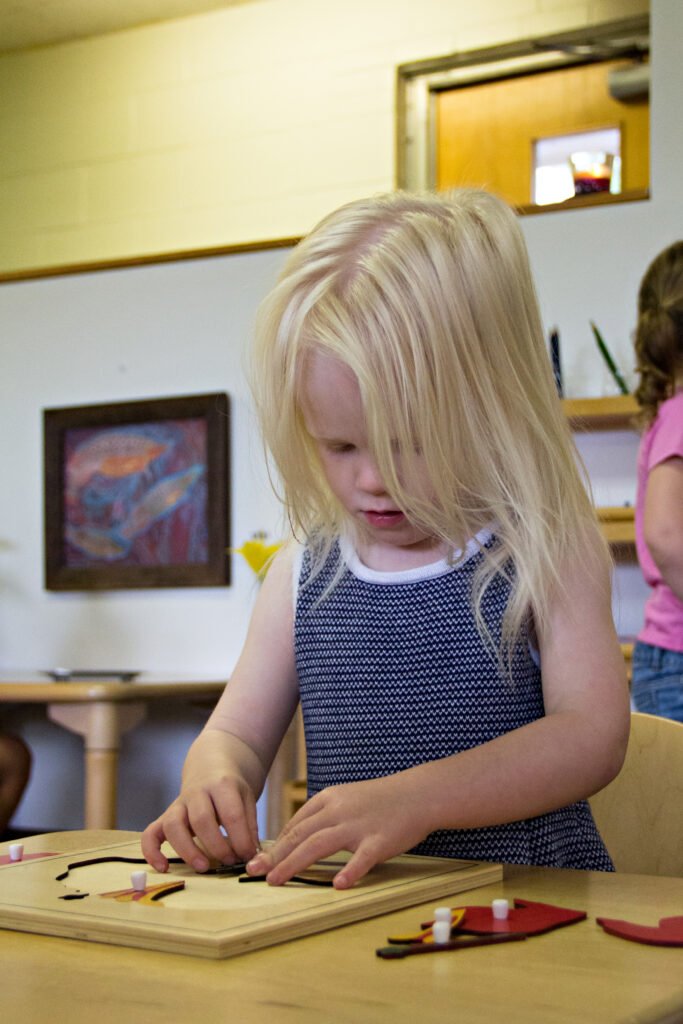 The new year is often a time when folks embrace change and take ownership of different parts of their lives or routines. While these changes and shifts can happen at any time, there's something about the newness of the year which inspires us and boosts our motivation.The new year can also be a good time to revisit our children's routines. Below please find a few blog posts to reflect on in terms of rebooting some of your routines at home. While too much change can be overwhelming for young children, they can handle more change when the adjustments allow routines to better meet their needs!Here's to a fantastic 2019!http://www.montessori-blog.org/2018/10/24/mornings-screens-and-a-bit-on-executive-functions/http://www.montessori-blog.org/2018/09/01/lunch-part-1/http://www.montessori-blog.org/2017/11/02/the-importance-of-sleep-5-tips-to-establishing-good-sleep-habits/Thanks to Melinda Smith for the photograph!
The new year is often a time when folks embrace change and take ownership of different parts of their lives or routines. While these changes and shifts can happen at any time, there's something about the newness of the year which inspires us and boosts our motivation.The new year can also be a good time to revisit our children's routines. Below please find a few blog posts to reflect on in terms of rebooting some of your routines at home. While too much change can be overwhelming for young children, they can handle more change when the adjustments allow routines to better meet their needs!Here's to a fantastic 2019!http://www.montessori-blog.org/2018/10/24/mornings-screens-and-a-bit-on-executive-functions/http://www.montessori-blog.org/2018/09/01/lunch-part-1/http://www.montessori-blog.org/2017/11/02/the-importance-of-sleep-5-tips-to-establishing-good-sleep-habits/Thanks to Melinda Smith for the photograph!
 For those needing to hone their phonetic reading skills... Tonight is the big night of the concert (!!!)All credit for this post to Heather Steinman... and of course the Tabletop Moveable Alphabet author...
For those needing to hone their phonetic reading skills... Tonight is the big night of the concert (!!!)All credit for this post to Heather Steinman... and of course the Tabletop Moveable Alphabet author...





























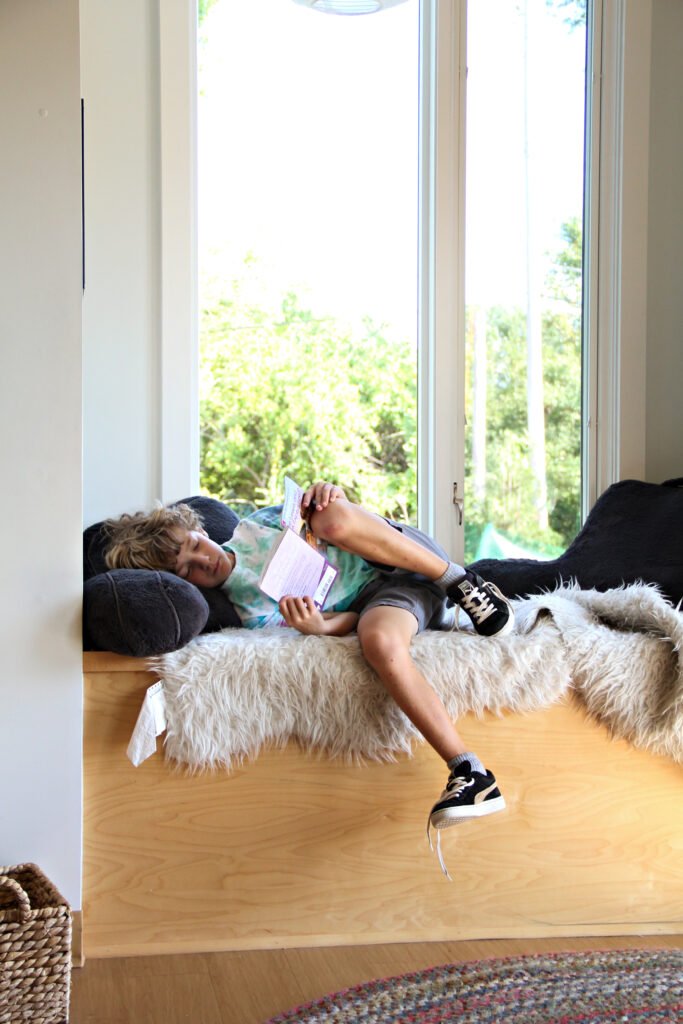 Reading to your children is wonderful. Please keep doing it. If you're not already in the habit of reading to your child every day, start the habit now! Bedtime is the classic time but for those children who wake extra early, morning reading can be a great way to enter the day. Any time that works for you family is a good time.
Reading to your children is wonderful. Please keep doing it. If you're not already in the habit of reading to your child every day, start the habit now! Bedtime is the classic time but for those children who wake extra early, morning reading can be a great way to enter the day. Any time that works for you family is a good time.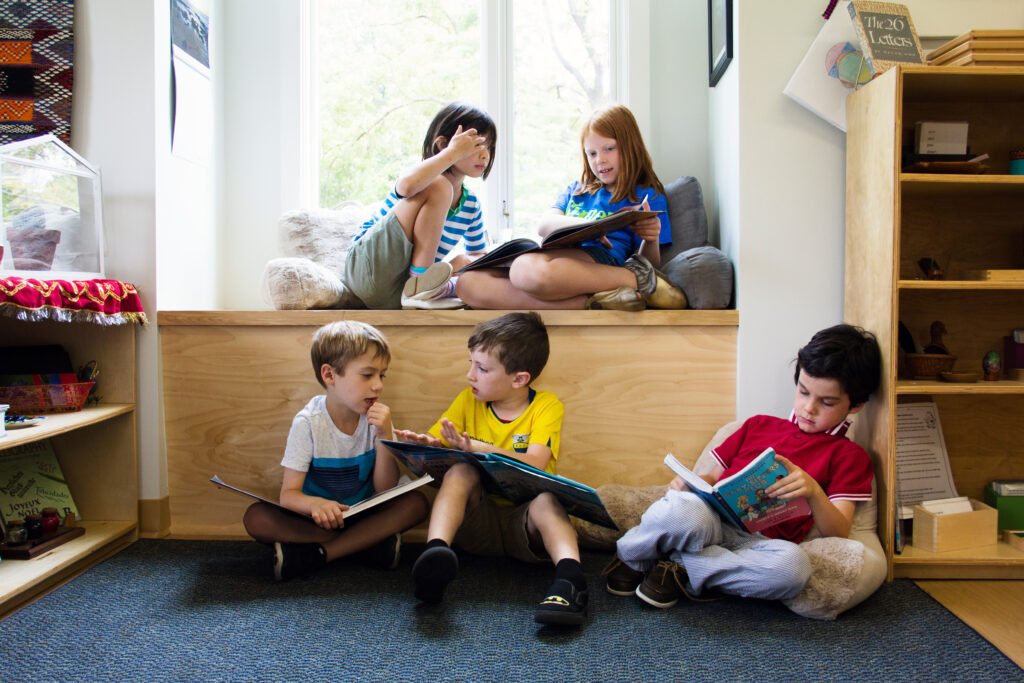 Another powerful way to foster a love of reading in your child is to simply read yourself. Pick up a book and read - to yourself, by yourself - and let them see you doing it. Children emulate what we do. They learn how to navigate the world from us. So, if you want reading to be part of their lives, make it a part of your life in such a way that they can see it.
Another powerful way to foster a love of reading in your child is to simply read yourself. Pick up a book and read - to yourself, by yourself - and let them see you doing it. Children emulate what we do. They learn how to navigate the world from us. So, if you want reading to be part of their lives, make it a part of your life in such a way that they can see it.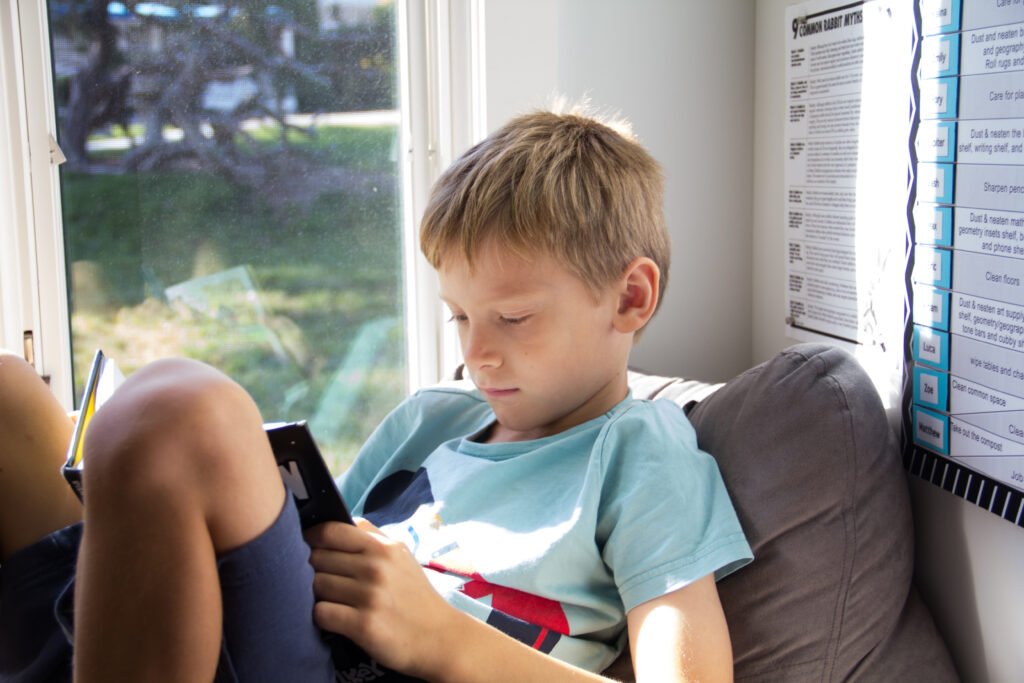 Many adults read at night before bed, and as relaxing as this may be for us, our children do not typically observe this part of our day. So, yes this is your excuse to let the dishes sit in the sink and read. Show your children the magic of being caught in a book so good that you can't put it down. When you're sitting in line at dismissal pick up your book instead of your phone. Make regular trips with your children to the library and make sure they know that at some point it's your turn to look through the stacks for books or pick up the books you've requested. Read. Just like they will want to play on your phone if they see you on your phone... they will also want to know the magic of books if they see that it's a part of your life. Let reading permeate the culture of your family.
Many adults read at night before bed, and as relaxing as this may be for us, our children do not typically observe this part of our day. So, yes this is your excuse to let the dishes sit in the sink and read. Show your children the magic of being caught in a book so good that you can't put it down. When you're sitting in line at dismissal pick up your book instead of your phone. Make regular trips with your children to the library and make sure they know that at some point it's your turn to look through the stacks for books or pick up the books you've requested. Read. Just like they will want to play on your phone if they see you on your phone... they will also want to know the magic of books if they see that it's a part of your life. Let reading permeate the culture of your family.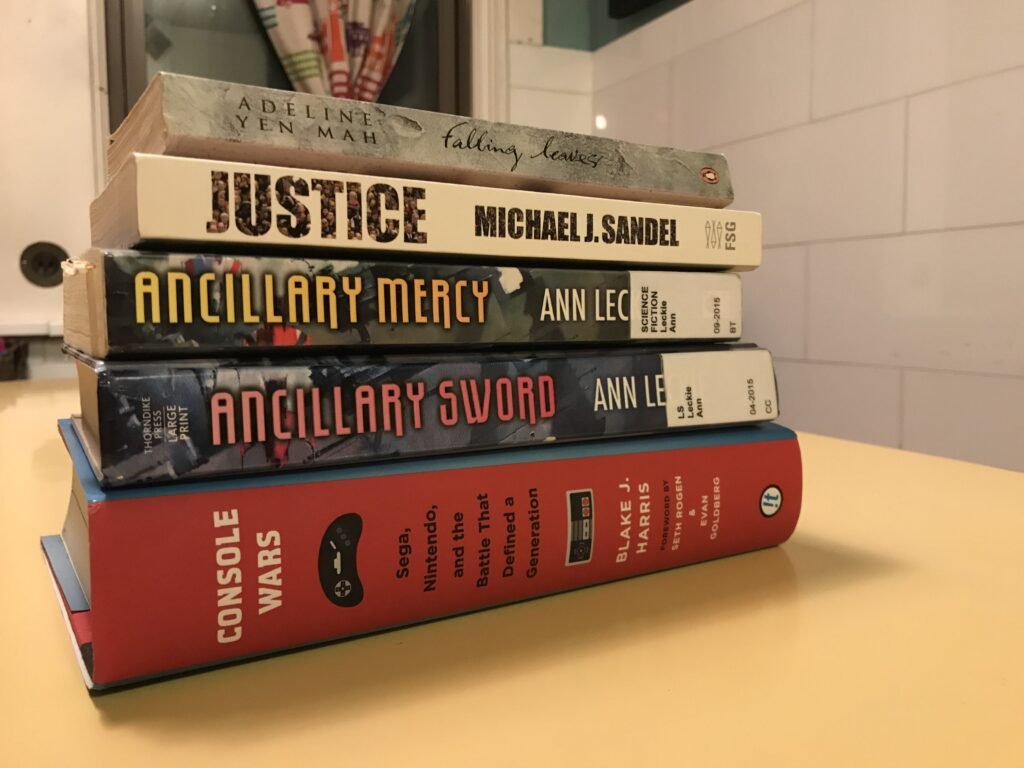 Thank you Melinda for all your mad photo taking skills.
Thank you Melinda for all your mad photo taking skills.
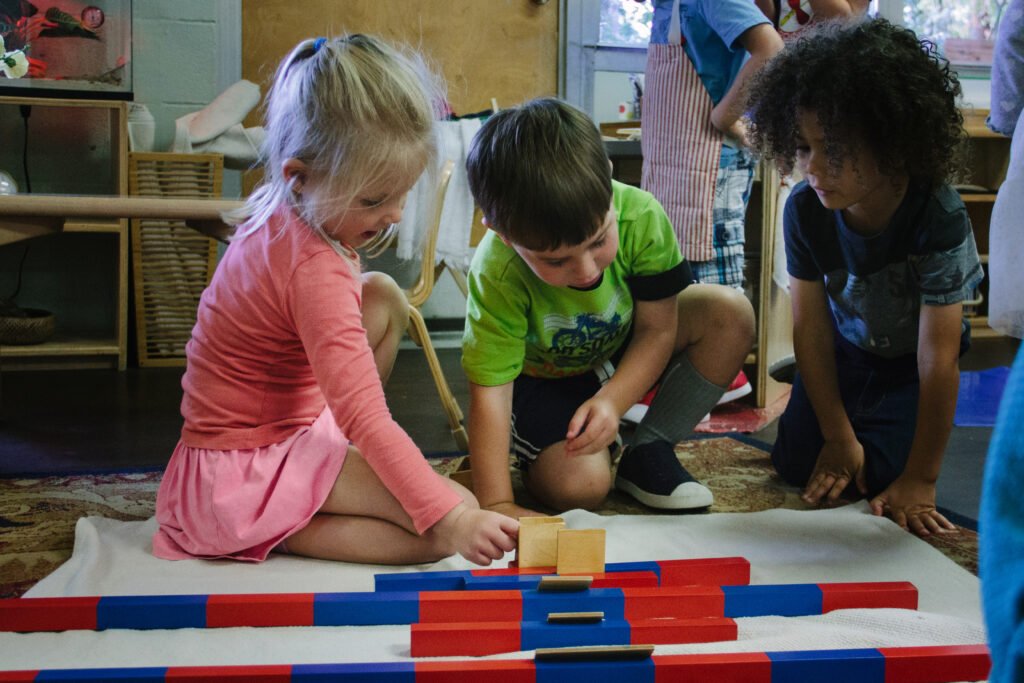
 There is great freedom given to the children in each environment, with the primary limitation on their freedom being the other humans who share their space. Think of the materials in the classroom. With the exception of a few materials there is only one of everything. This means that there will definitely be times when children want to do something that is not available.The child walks over to choose something only to discover that their classmate is working with the material. Through this the child learns to wait, take turns, exercise patience and practice delayed gratification. Self-control is born of being part of a group. Not out of depravity does the child learn these things but out of an understanding of community.
There is great freedom given to the children in each environment, with the primary limitation on their freedom being the other humans who share their space. Think of the materials in the classroom. With the exception of a few materials there is only one of everything. This means that there will definitely be times when children want to do something that is not available.The child walks over to choose something only to discover that their classmate is working with the material. Through this the child learns to wait, take turns, exercise patience and practice delayed gratification. Self-control is born of being part of a group. Not out of depravity does the child learn these things but out of an understanding of community.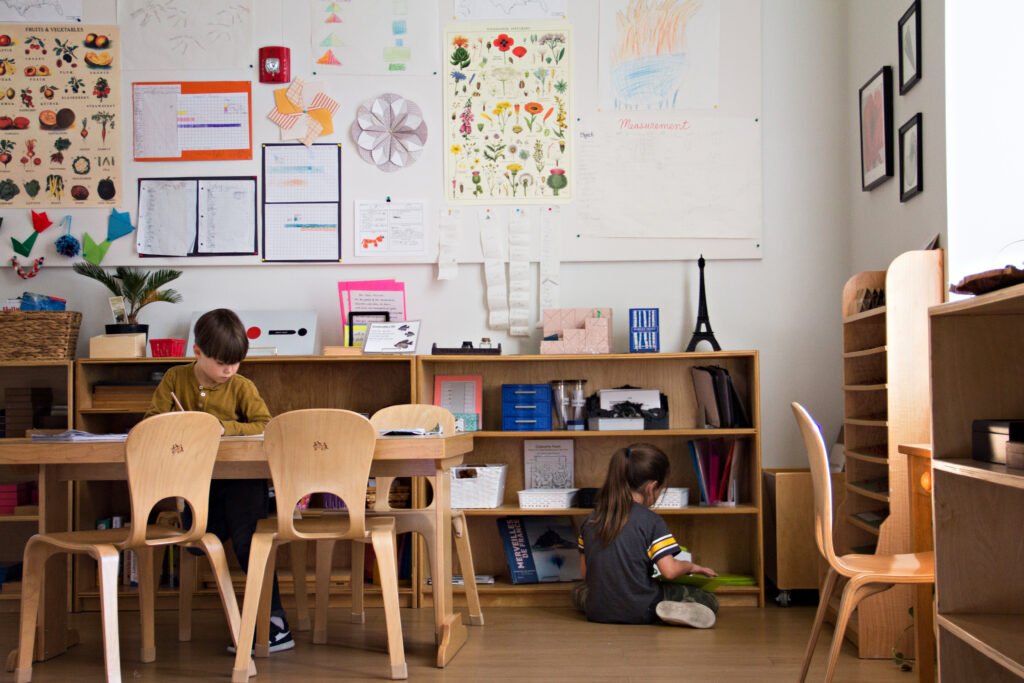 Children have the freedom to move in the classroom but their movements may not hurt others and may not disturb others' work. Their freedom is curbed in so far as they are part of a group. Individual allowances are made - children can understand why their classmate needs extra space at a table to do their giant long division problem. In fact, such allowances are easier to make because children know what it means to share space, to give and to take.How powerful to realize that our individual freedoms and choices must exist within the context of other people - that we cannot choose without our choices impacting others. The fierce individuality that Montessori environments foster through choice is misunderstood if not contextualized with the deep reverence given to interdependence and community.
Children have the freedom to move in the classroom but their movements may not hurt others and may not disturb others' work. Their freedom is curbed in so far as they are part of a group. Individual allowances are made - children can understand why their classmate needs extra space at a table to do their giant long division problem. In fact, such allowances are easier to make because children know what it means to share space, to give and to take.How powerful to realize that our individual freedoms and choices must exist within the context of other people - that we cannot choose without our choices impacting others. The fierce individuality that Montessori environments foster through choice is misunderstood if not contextualized with the deep reverence given to interdependence and community.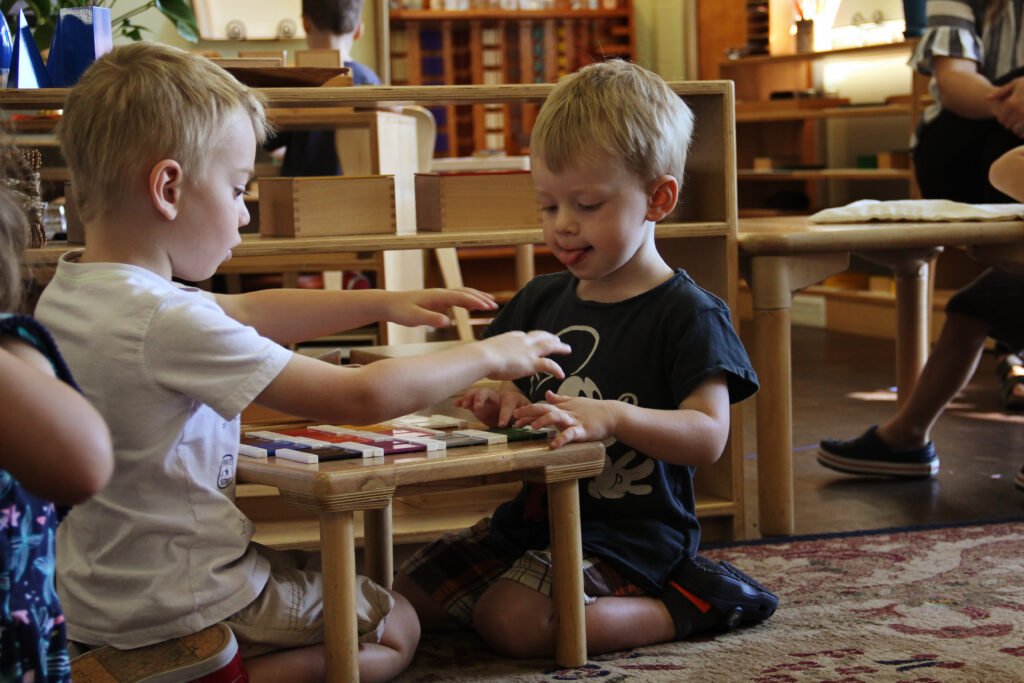 The ever talented Melinda Smith generously shared her superb photography skills once again. Melinda you are wonderful. Thank you.
The ever talented Melinda Smith generously shared her superb photography skills once again. Melinda you are wonderful. Thank you.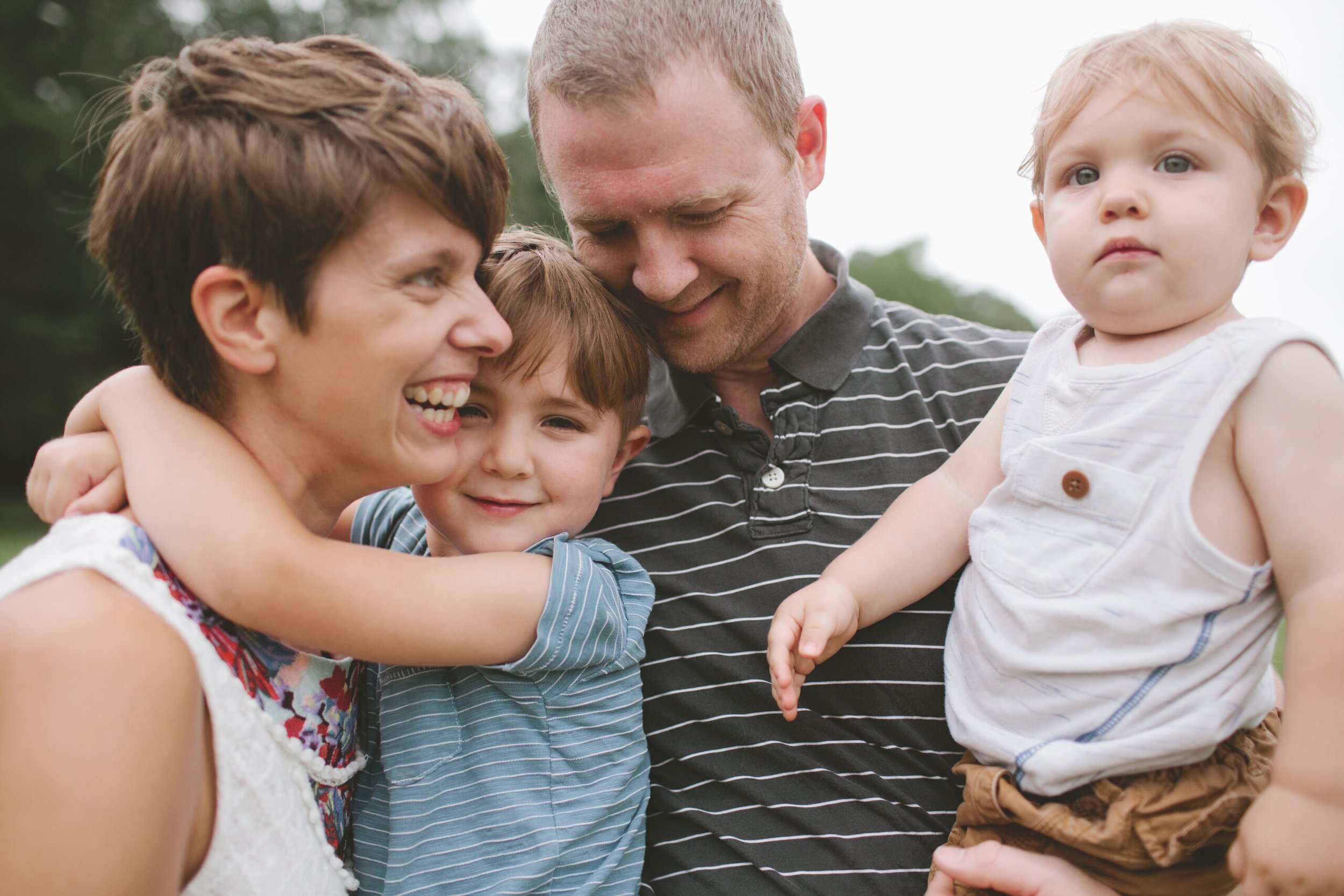
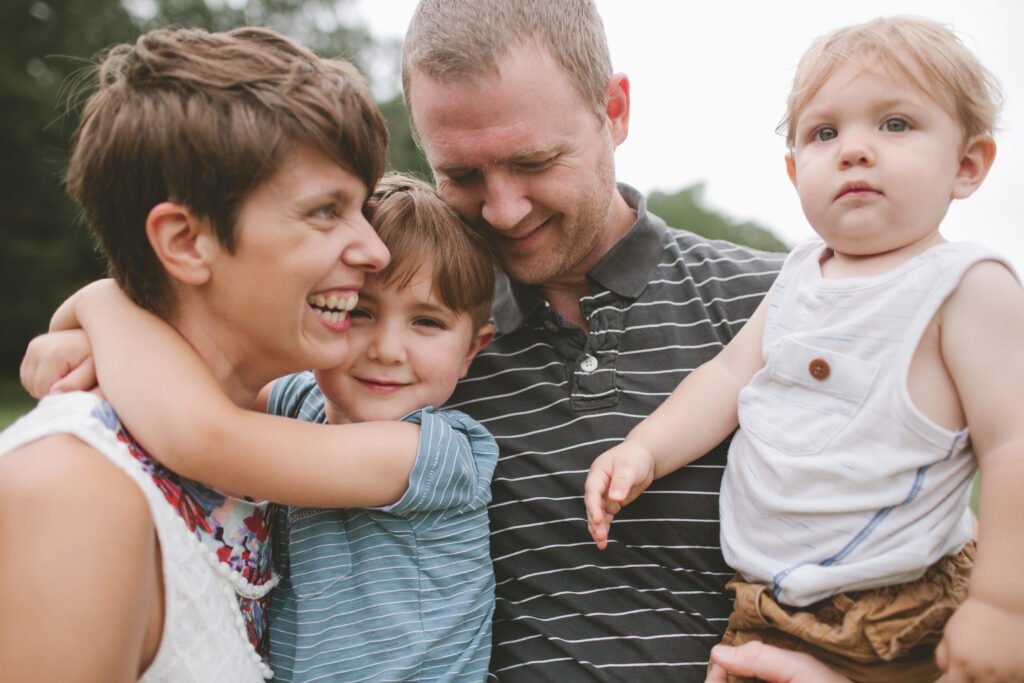 We shouldn't abdicate responsibility for our mistakes, however many of us beat ourselves up over our every failing, shortcoming or momentary slip. I’m going to suggest that we instead embrace forgiveness. Yes, you've made a mistake. Yes, you can find a way to move forward. Let's make an effort as parents to deal with our mistakes in a manner that we’d want our children to emulate as they inevitably face their own shortcomings. Show them how to face imperfection.Treat yourself the way you would like your child to treat themselves. Your child is learning from you just how hard to be on themselves. Take responsibility, find a good solution and forgive yourself.
We shouldn't abdicate responsibility for our mistakes, however many of us beat ourselves up over our every failing, shortcoming or momentary slip. I’m going to suggest that we instead embrace forgiveness. Yes, you've made a mistake. Yes, you can find a way to move forward. Let's make an effort as parents to deal with our mistakes in a manner that we’d want our children to emulate as they inevitably face their own shortcomings. Show them how to face imperfection.Treat yourself the way you would like your child to treat themselves. Your child is learning from you just how hard to be on themselves. Take responsibility, find a good solution and forgive yourself.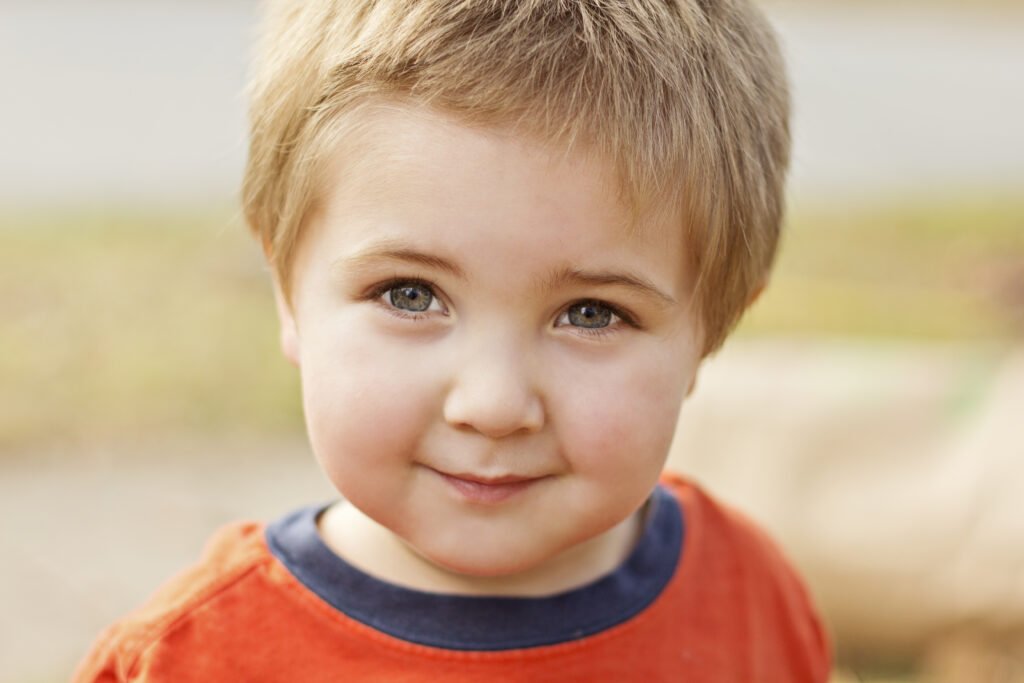 All photographic credit is due to Erin Drago.
All photographic credit is due to Erin Drago.
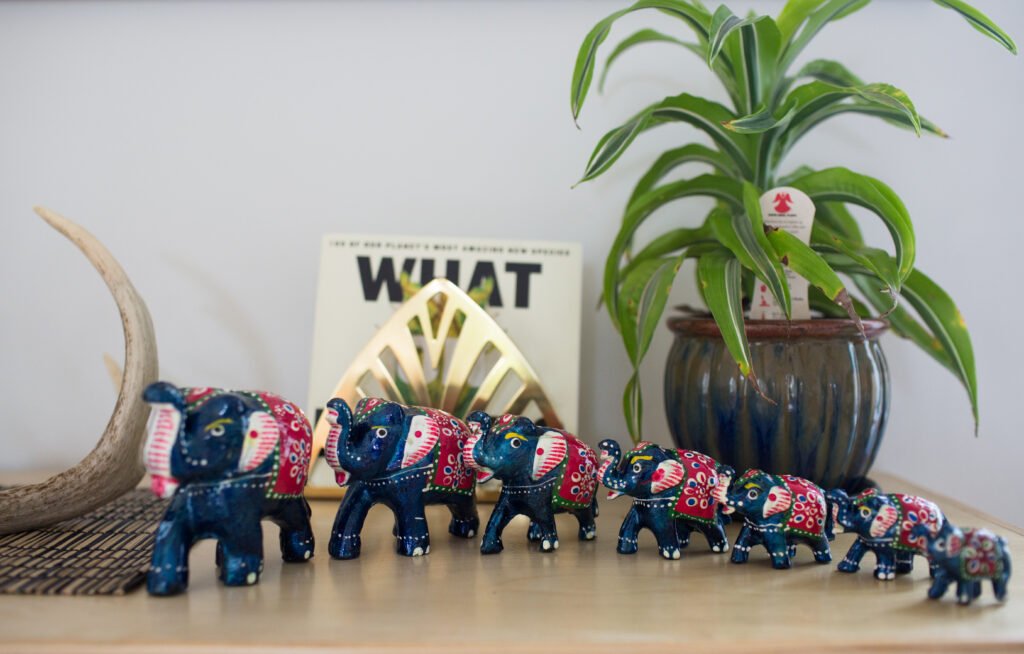 Making choices is a huge part of adult life. Our days are packed with choices, big and small. While many of us may wish to rid ourselves of the seemingly endless decision making, we can't deny that it's a central part of life - and that being good at it is advantageous.To help our children cultivate their choice making competency, we must offer choices within a framework. As wonderful as choice is in a young life, unchecked, unlimited choice hinders children's ability to choose and learn the nuances of making a choice. Limits are crucial. So, let's look into some of the parameters we can implement around choices.
Making choices is a huge part of adult life. Our days are packed with choices, big and small. While many of us may wish to rid ourselves of the seemingly endless decision making, we can't deny that it's a central part of life - and that being good at it is advantageous.To help our children cultivate their choice making competency, we must offer choices within a framework. As wonderful as choice is in a young life, unchecked, unlimited choice hinders children's ability to choose and learn the nuances of making a choice. Limits are crucial. So, let's look into some of the parameters we can implement around choices.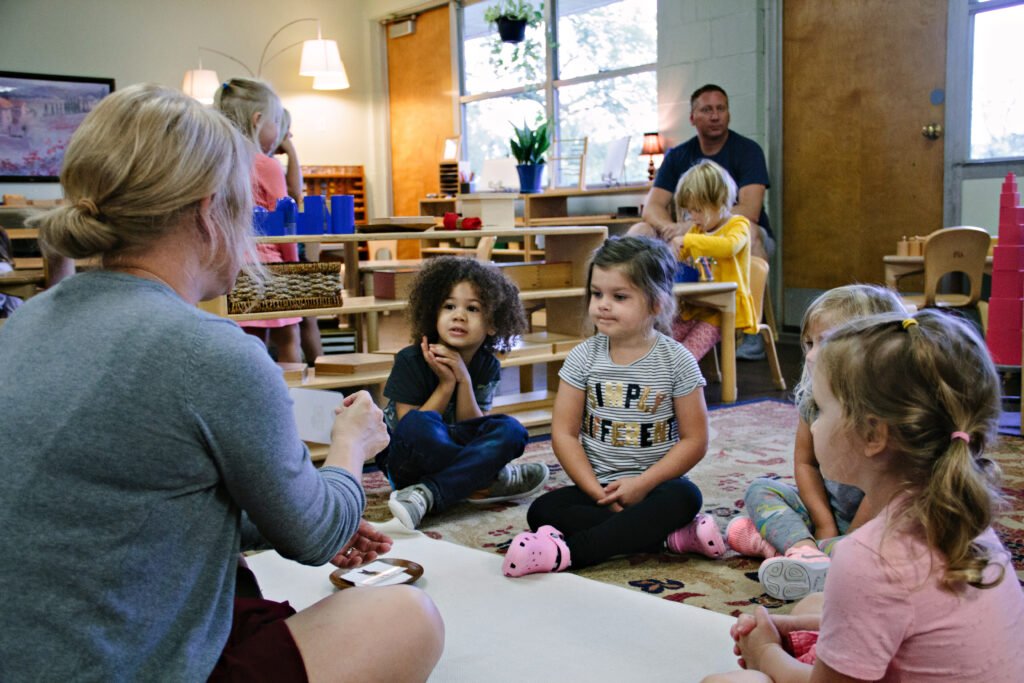 1. The first limit on choices is to remember that some things are not choices. Whether or not your child is buckled into the car before driving is not an option. Don’t offer choices that are not choices. Read more on offering real choices
1. The first limit on choices is to remember that some things are not choices. Whether or not your child is buckled into the car before driving is not an option. Don’t offer choices that are not choices. Read more on offering real choices 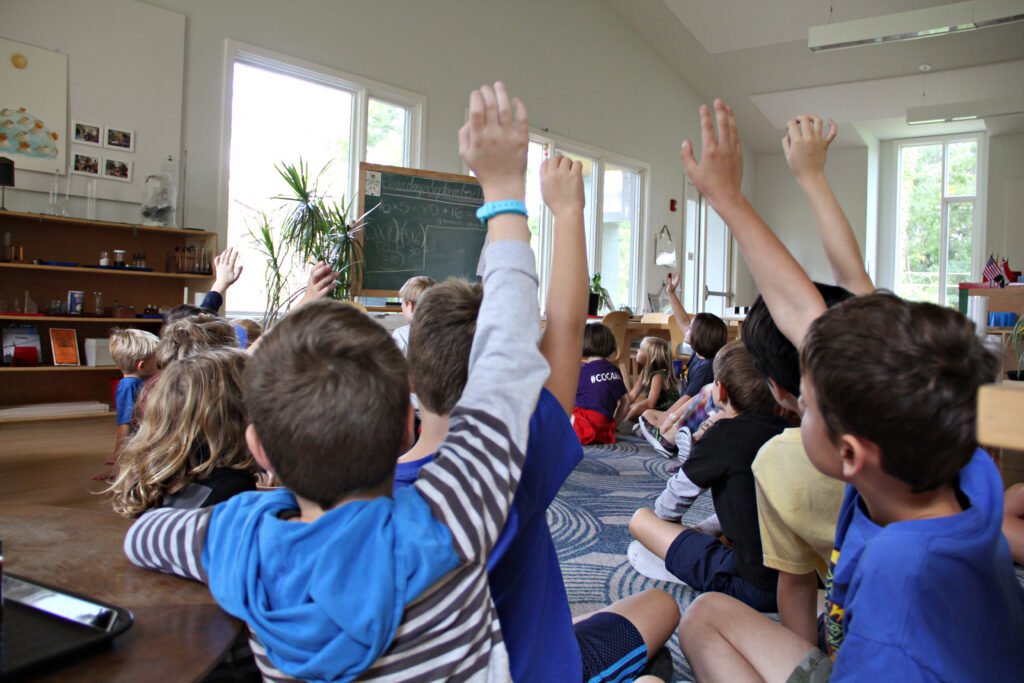 4. Only offer children low stakes choices. They need to practice making choices; they don't need to practice recovering from catastrophic choices. Children cannot always predict the entirety of the outcomes of their choices before making them - don’t offer choices that the children will be sorry they made or won't be able to recover from.5. Don’t offer a choice that consists of a terrible option vs. a great option. Generally when we do this to our children, we are really trying to make them choose one thing over another. This is not fair to your child. They are practicing making choices, let them practice.
4. Only offer children low stakes choices. They need to practice making choices; they don't need to practice recovering from catastrophic choices. Children cannot always predict the entirety of the outcomes of their choices before making them - don’t offer choices that the children will be sorry they made or won't be able to recover from.5. Don’t offer a choice that consists of a terrible option vs. a great option. Generally when we do this to our children, we are really trying to make them choose one thing over another. This is not fair to your child. They are practicing making choices, let them practice.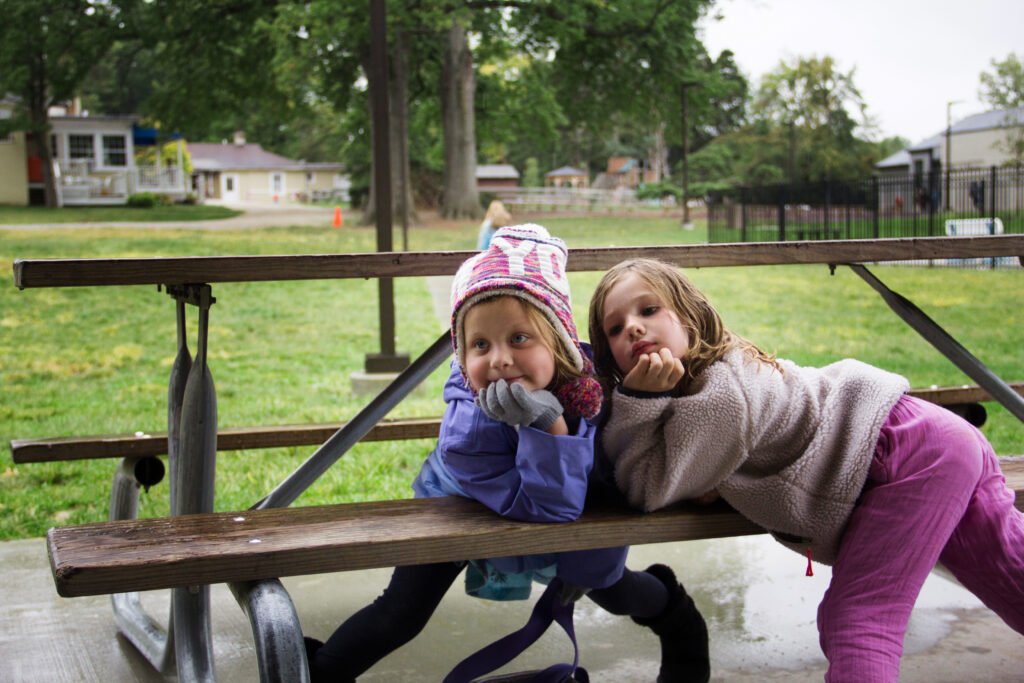 Again, seek help from someone who excels at this. Reach out to a guide or one of the many folks here to support us as parents. The nuances of choices are important and the payoff is well worth the effort!Melinda, your photos make everything better! Thank you.Thanks as well to Brigid Jhee and Anna Schwind for ideas, examples and conversations that improved this post.
Again, seek help from someone who excels at this. Reach out to a guide or one of the many folks here to support us as parents. The nuances of choices are important and the payoff is well worth the effort!Melinda, your photos make everything better! Thank you.Thanks as well to Brigid Jhee and Anna Schwind for ideas, examples and conversations that improved this post.






 The expanse of fresh snow beckons the children to adventure!
The expanse of fresh snow beckons the children to adventure!
 Oh the wonderful things we can do with snow...
Oh the wonderful things we can do with snow...
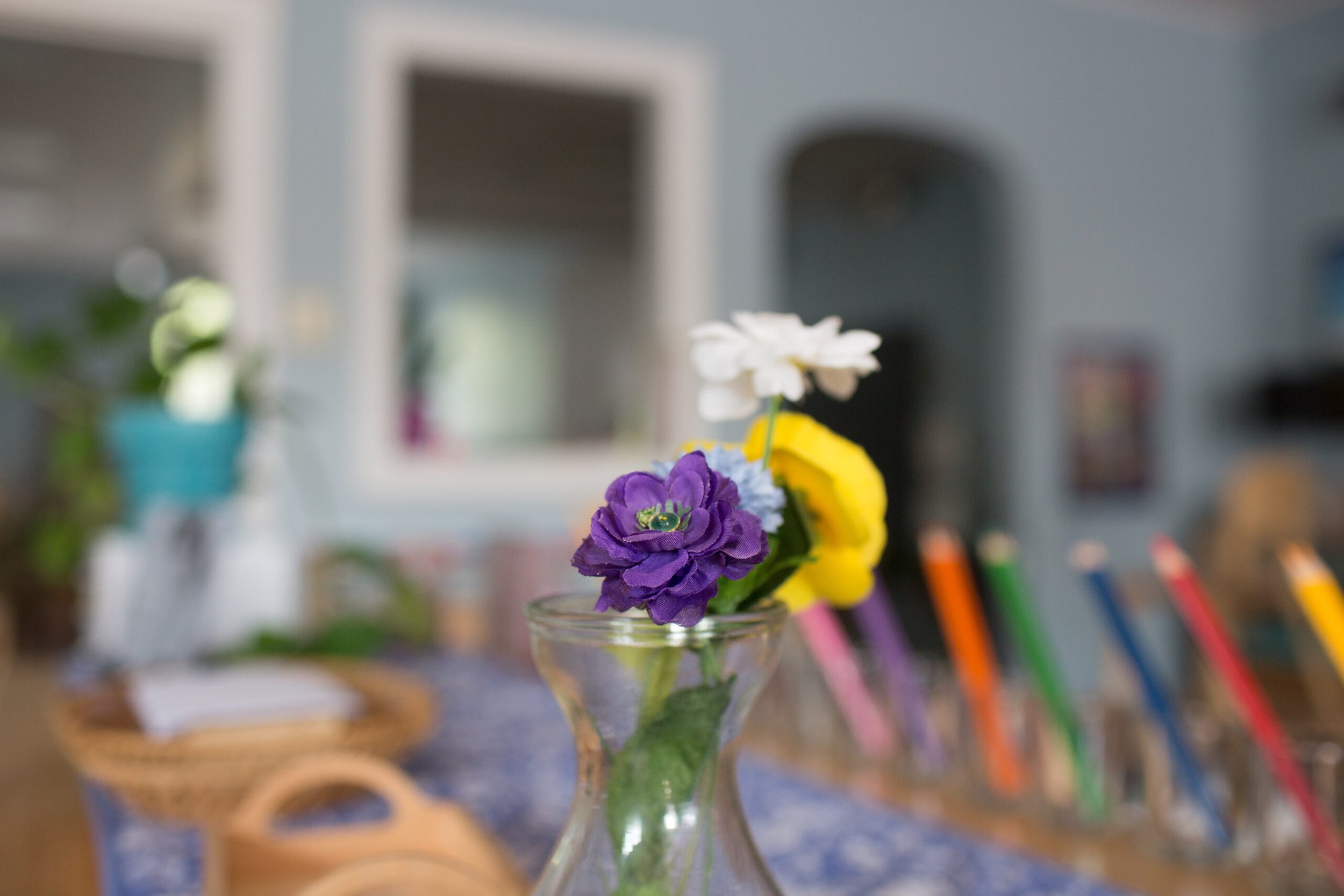
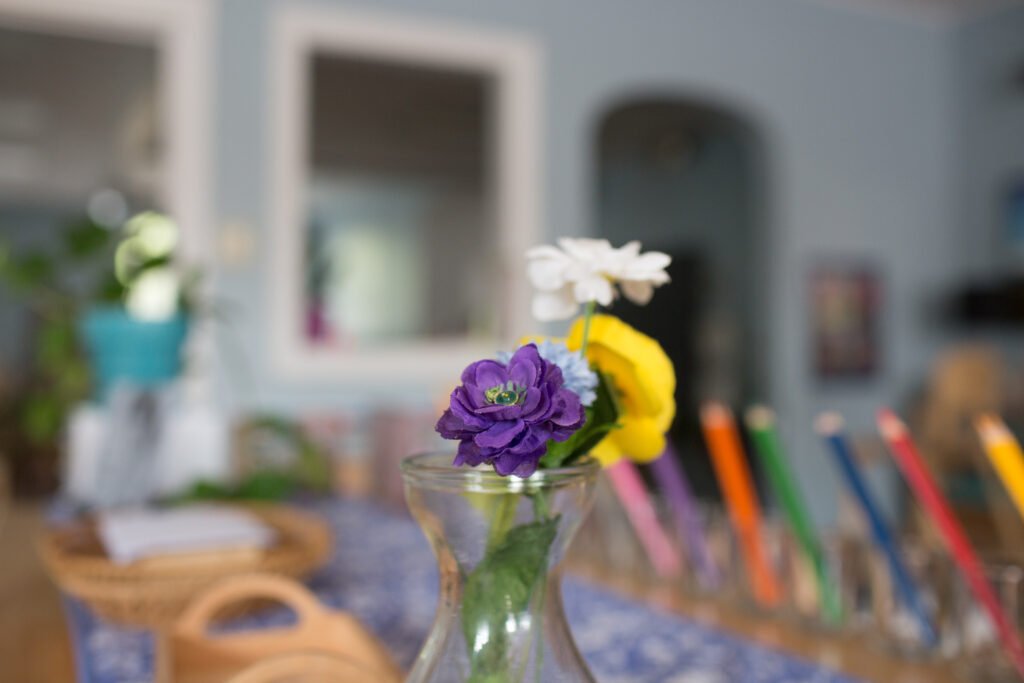 Choice is integral to Montessori because it is a necessary component of respecting the child. Choice is empowering and important. Choice allows all of us, children included, to take ownership of ourselves and our environment. We often expect children to control themselves and make good choices, but we don’t give them the opportunity to practice either of these. If you want your child to learn to control their body, you must first allow them to move their body. If you want them to make good choices, you must give them practice making choices.However, all choice is not equal. In order to reap the benefits of making a choice there are elements which must also be in play. One of these is the authenticity of the choice.
Choice is integral to Montessori because it is a necessary component of respecting the child. Choice is empowering and important. Choice allows all of us, children included, to take ownership of ourselves and our environment. We often expect children to control themselves and make good choices, but we don’t give them the opportunity to practice either of these. If you want your child to learn to control their body, you must first allow them to move their body. If you want them to make good choices, you must give them practice making choices.However, all choice is not equal. In order to reap the benefits of making a choice there are elements which must also be in play. One of these is the authenticity of the choice.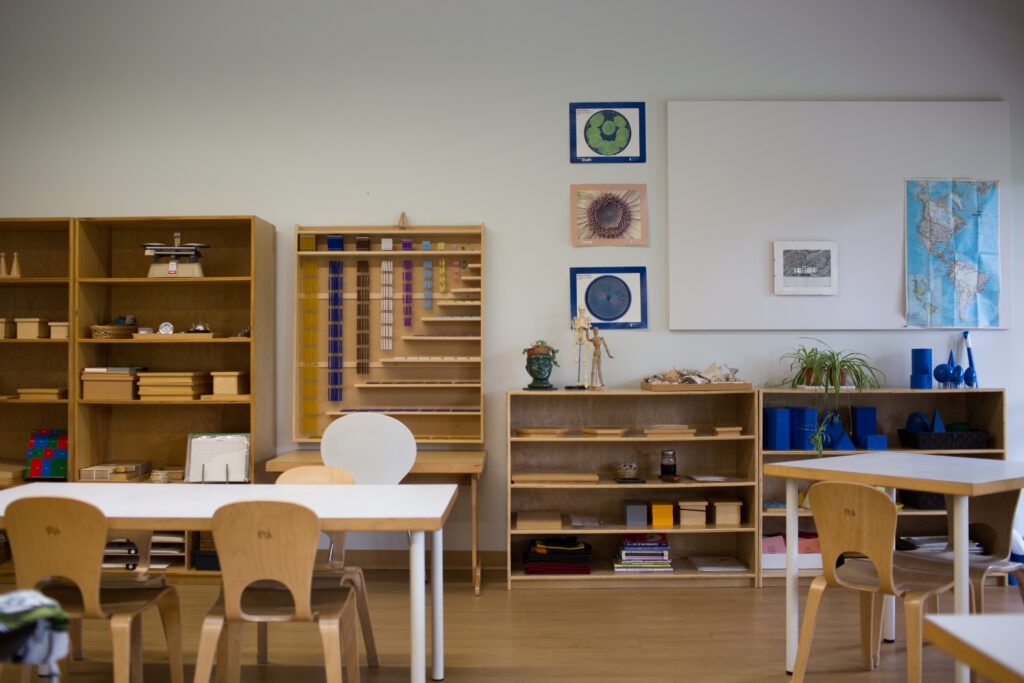 Often the choices we offer children are not real choices. I would guess we’ve all had moments where we’ve said something to the effect of, “If you don’t put on your shoes, you can’t go to school.” And, if we’re honest with ourselves we know that those words are not accurate; that choice is not real. When our child chooses not to put on their shoes, we will likely just pop those shoes on their feet and scamper off to school. Or perhaps we’ll take the negotiation route change our tack to, "I'll tell you what, if you put your shoes on you can ...."An authentic choice in the above situation would be, “Are you going to put on your shoes or shall I put them on?” Or, "Are you going to put on your left shoe first or your right shoe?" (The second approach may require a follow up of, "I see you are not choosing which shoe to put on first. I will put your left shoe on first.")Even if we think of it as practice, in order for our children to reap the vast benefits of choice-making, real choices are necessary. If a child is offered false choices (or "choices" that aren't really choices), they learn that their choice is neither important nor valid. Furthermore, they do not learn the consequences (good or bad!) of making that choice.
Often the choices we offer children are not real choices. I would guess we’ve all had moments where we’ve said something to the effect of, “If you don’t put on your shoes, you can’t go to school.” And, if we’re honest with ourselves we know that those words are not accurate; that choice is not real. When our child chooses not to put on their shoes, we will likely just pop those shoes on their feet and scamper off to school. Or perhaps we’ll take the negotiation route change our tack to, "I'll tell you what, if you put your shoes on you can ...."An authentic choice in the above situation would be, “Are you going to put on your shoes or shall I put them on?” Or, "Are you going to put on your left shoe first or your right shoe?" (The second approach may require a follow up of, "I see you are not choosing which shoe to put on first. I will put your left shoe on first.")Even if we think of it as practice, in order for our children to reap the vast benefits of choice-making, real choices are necessary. If a child is offered false choices (or "choices" that aren't really choices), they learn that their choice is neither important nor valid. Furthermore, they do not learn the consequences (good or bad!) of making that choice.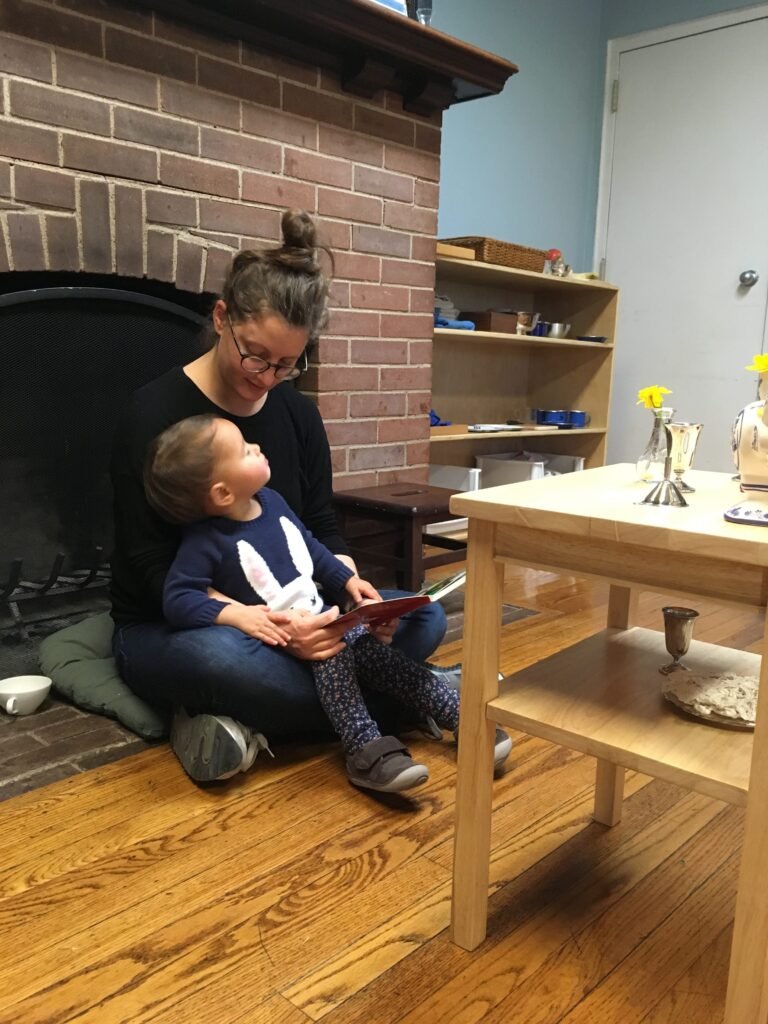 Perhaps more profoundly in the parent-child relationship, false choices do not build trust and they do not help our children understand their world. If we tell our children one thing but then do something else entirely, how do our children know what we mean? How do they know that the next time we really mean x or y? When offering a choice try your best to mean what you say and say what you mean. Yes, this is a skill that takes practice!If we offer a choice we should try to make it a genuine choice. The trust built on knowing that we mean what we say has a far-reaching effect for our children. It gives them a firm foundation on which to explore the world. It lets them see the power of their choices and their actions. The boundaries and limitations which are inherent to real choices offer a security and consistency which nurture children's growth.Choice-making, specifically learning how to make good choices, is a learned skill. It takes time to hone this skill, which is why we seek to provide lots of opportunities for practice. Try to take the time to reflect on what you're saying to your child, making sure you are offering a real choice. You give a great gift when you allow your child to truly practice making choices.With thanks to Melinda Smith and Rebecca Lev for the photographs.
Perhaps more profoundly in the parent-child relationship, false choices do not build trust and they do not help our children understand their world. If we tell our children one thing but then do something else entirely, how do our children know what we mean? How do they know that the next time we really mean x or y? When offering a choice try your best to mean what you say and say what you mean. Yes, this is a skill that takes practice!If we offer a choice we should try to make it a genuine choice. The trust built on knowing that we mean what we say has a far-reaching effect for our children. It gives them a firm foundation on which to explore the world. It lets them see the power of their choices and their actions. The boundaries and limitations which are inherent to real choices offer a security and consistency which nurture children's growth.Choice-making, specifically learning how to make good choices, is a learned skill. It takes time to hone this skill, which is why we seek to provide lots of opportunities for practice. Try to take the time to reflect on what you're saying to your child, making sure you are offering a real choice. You give a great gift when you allow your child to truly practice making choices.With thanks to Melinda Smith and Rebecca Lev for the photographs.
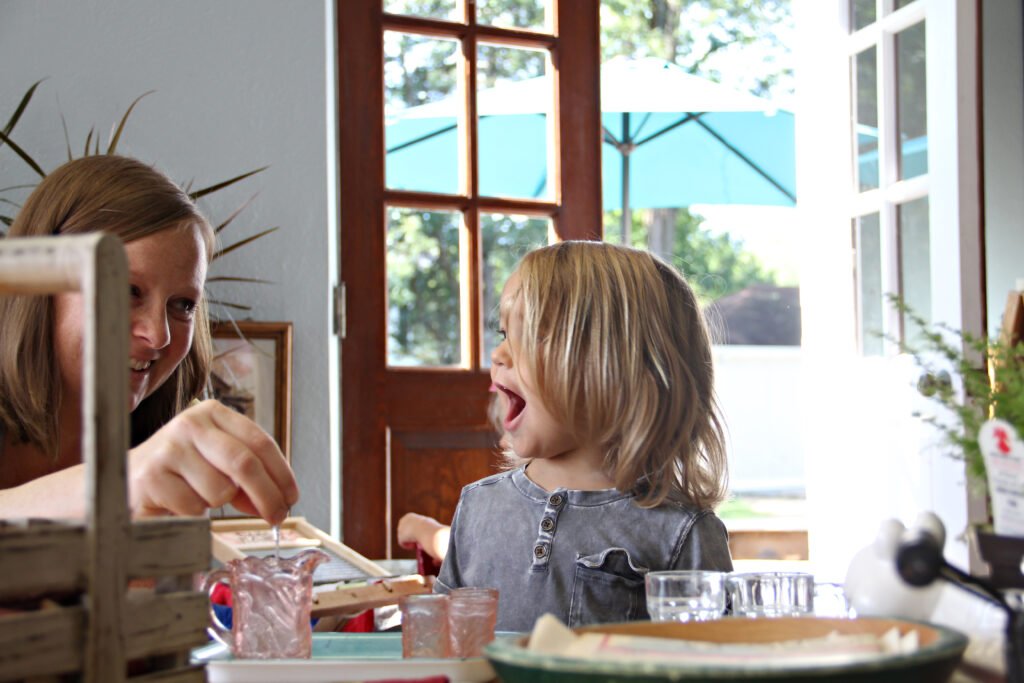
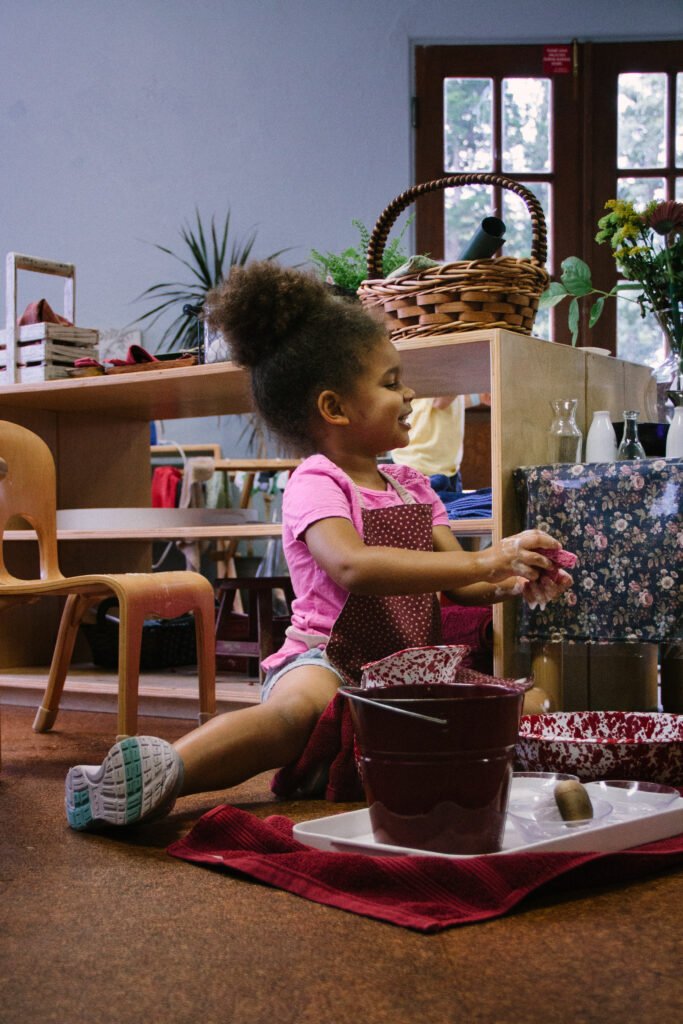
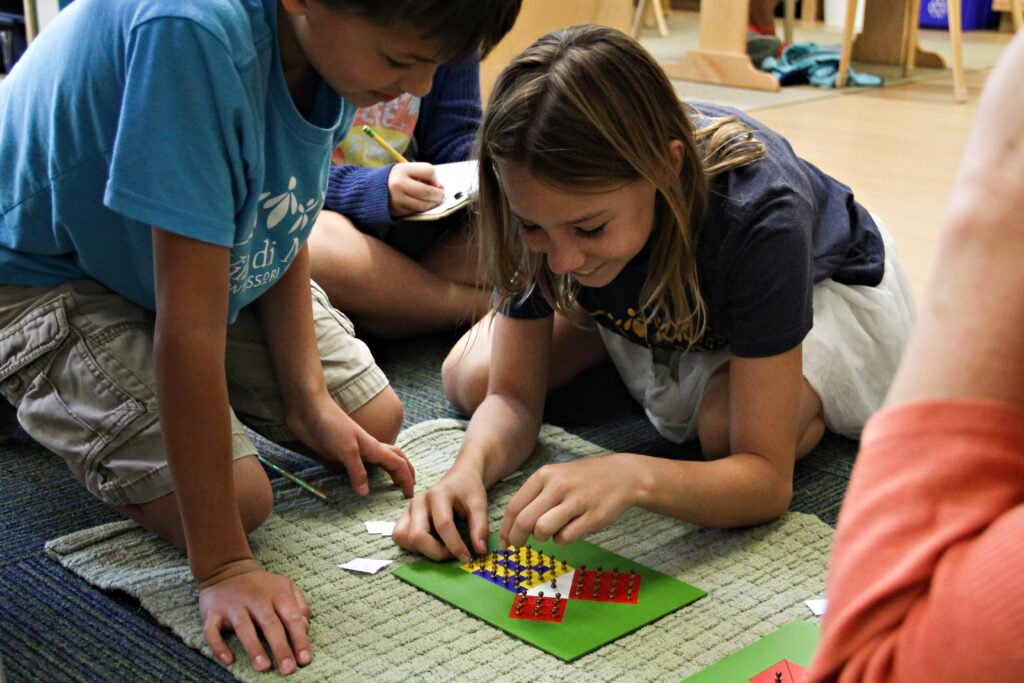
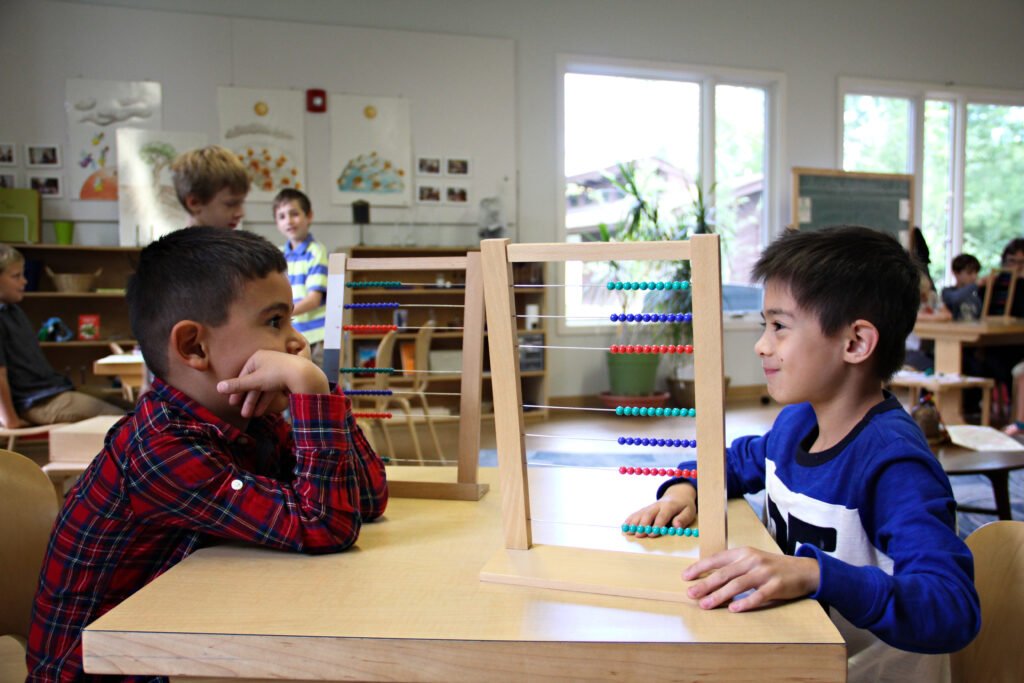

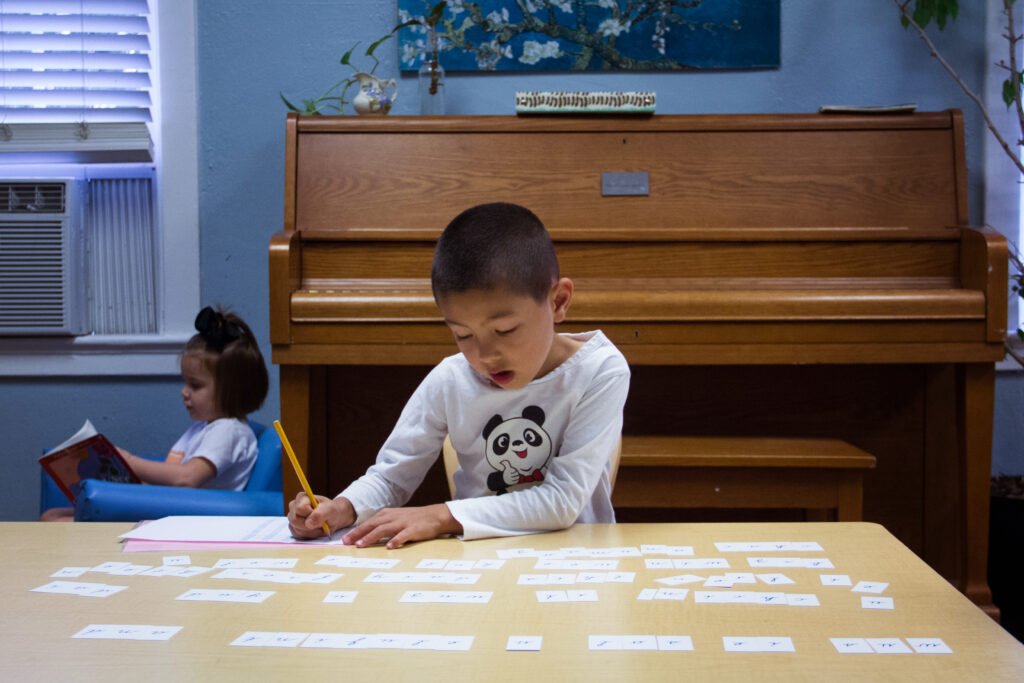 How brilliant to succeed at something that seemed just out of reach, but that we then find attainable through purposeful work. This is the Montessori environment. The happiness of the children in the classroom is the happiness of work, the joy of learning.
How brilliant to succeed at something that seemed just out of reach, but that we then find attainable through purposeful work. This is the Montessori environment. The happiness of the children in the classroom is the happiness of work, the joy of learning.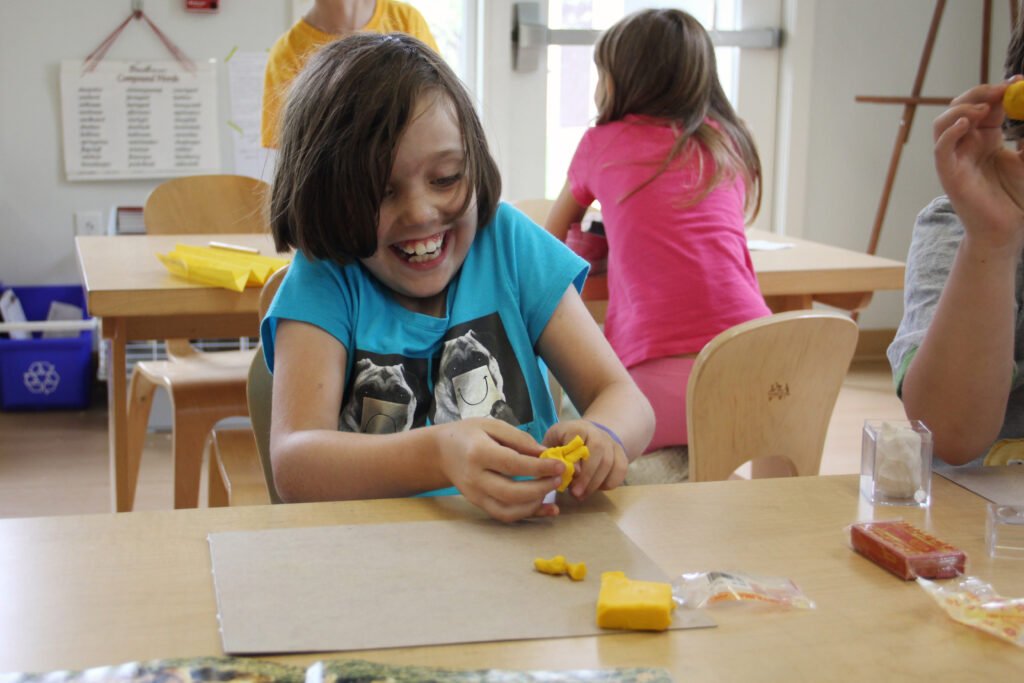 Photographic gems compliments of Melinda Smith.
Photographic gems compliments of Melinda Smith.